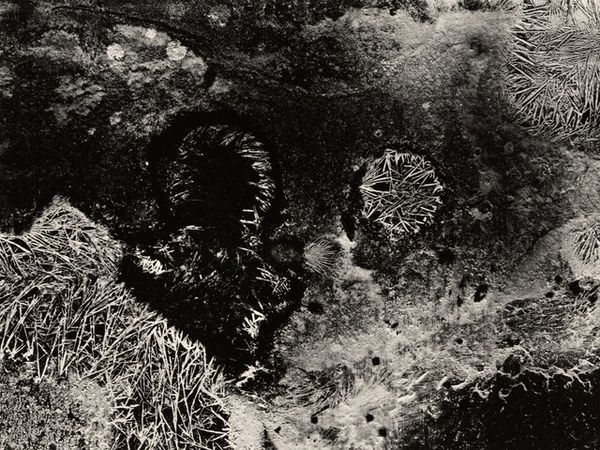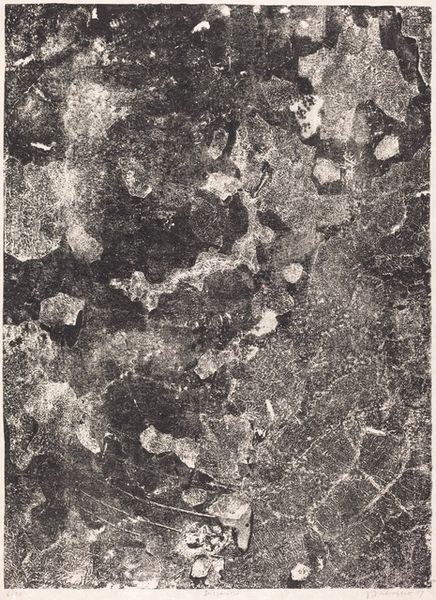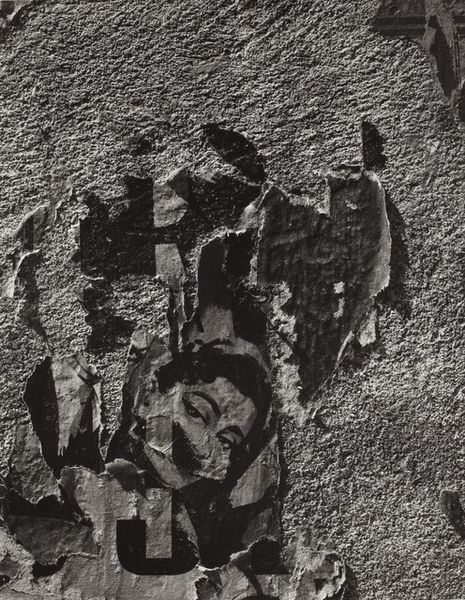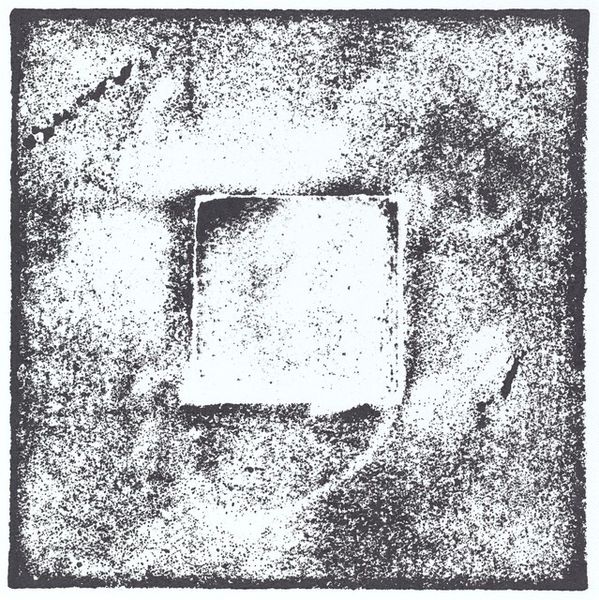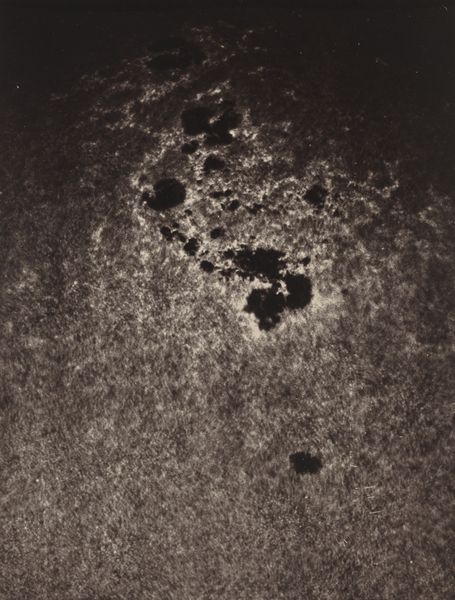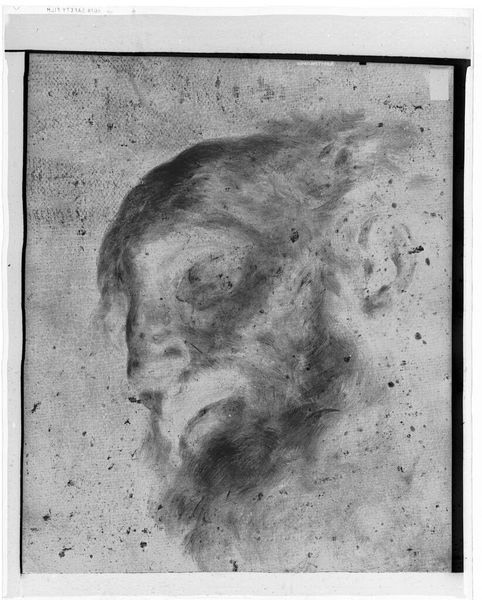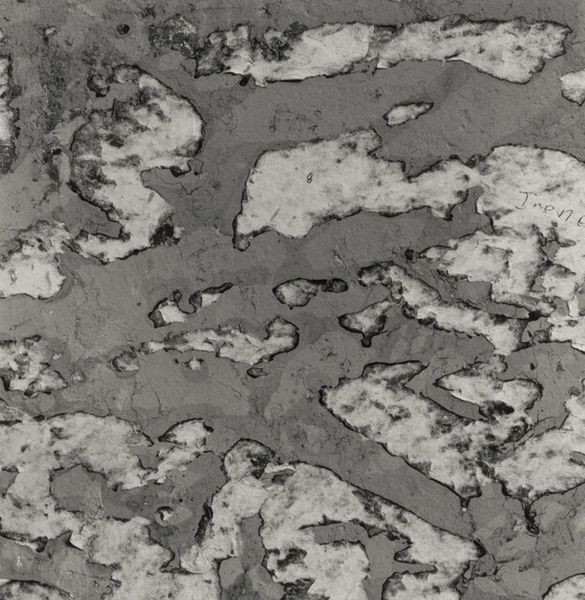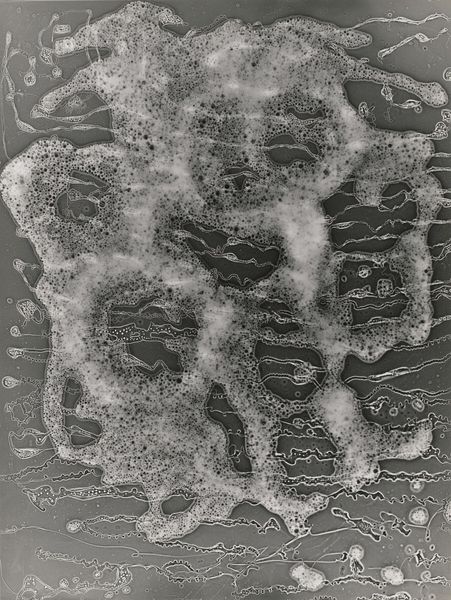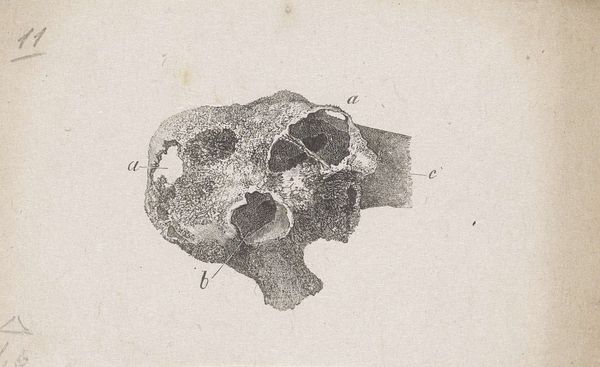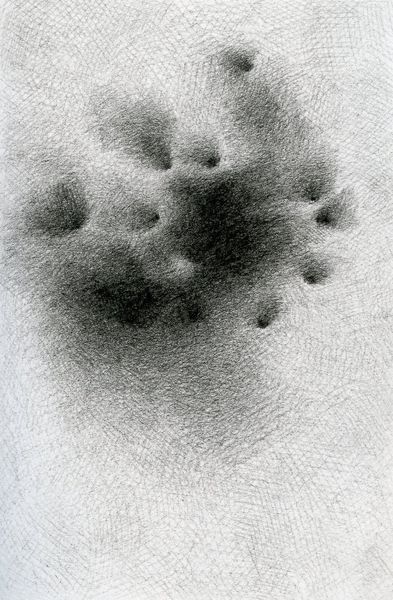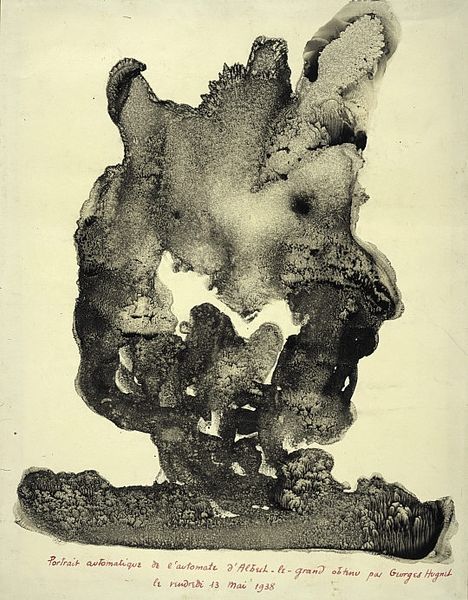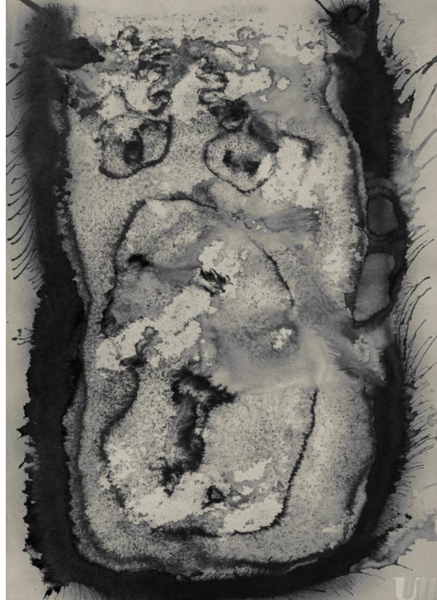
photography, gelatin-silver-print
#
still-life-photography
#
natural shape and form
#
photography
#
gelatin-silver-print
#
abstraction
#
natural texture
#
modernism
Dimensions: image: 49.2 × 50.2 cm (19 3/8 × 19 3/4 in.) sheet: 50.2 × 56.6 cm (19 3/4 × 22 5/16 in.)
Copyright: National Gallery of Art: CC0 1.0
Editor: This is Irving Penn’s "Underfoot II," a gelatin-silver print from around 2000-2001. It’s strikingly abstract, like looking at the surface of another planet, and creates this sense of…isolation, I guess? What do you see in this piece? Curator: Immediately, I am drawn to the texture, its inherent symbolism, and how it stirs something within us. This photographic print calls to mind something ancient and weathered. What happens if we imagine this "underfoot" perspective as a psychological landscape? Editor: Like, our subconscious? Curator: Precisely. Consider the cracking patterns within the central form. Those fractured lines might be read as evidence of past trauma, healed but permanently marked, like a palimpsest of experiences we carry. Doesn’t this evoke a sense of buried histories and resilience? What memories or thoughts surface as you focus on those details? Editor: I think about fragility, how easily things break. The circular shape feels almost cellular, but also damaged. Curator: Indeed. Circularity often signifies wholeness, but here, that is juxtaposed against fragmentation. Think about what those seemingly random darker speckles of its substrate *become* within that specific configuration, *that* is a key that triggers our deeper memories. Editor: So it's about finding the meaning within the familiar? Curator: Exactly! By prompting introspection through texture and form, Penn's "Underfoot II" encourages a reflection on our own psychological terrain. It definitely makes me reconsider how surfaces hold symbolic meaning. Editor: Me too. I see the symbolism in abstraction much more clearly now!
Comments
No comments
Be the first to comment and join the conversation on the ultimate creative platform.
